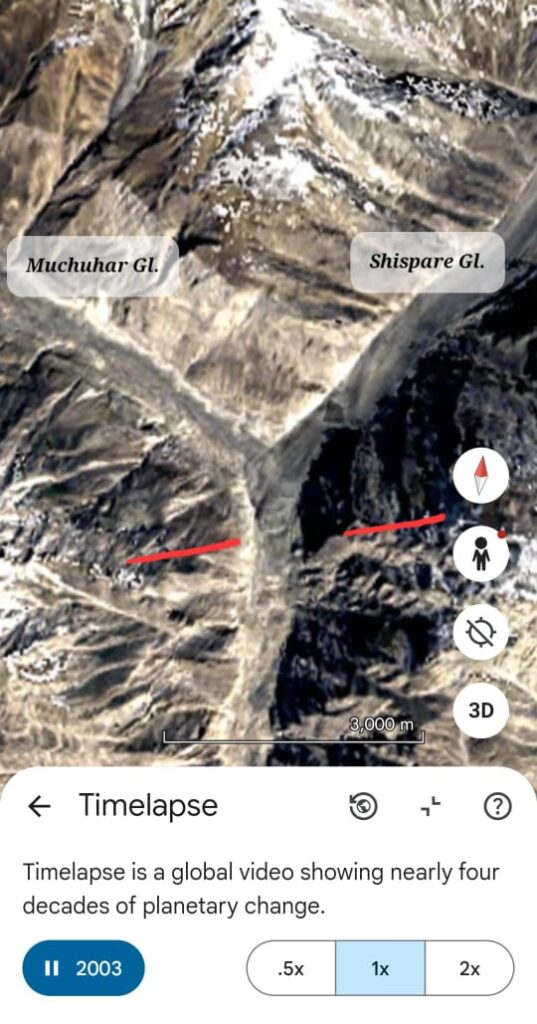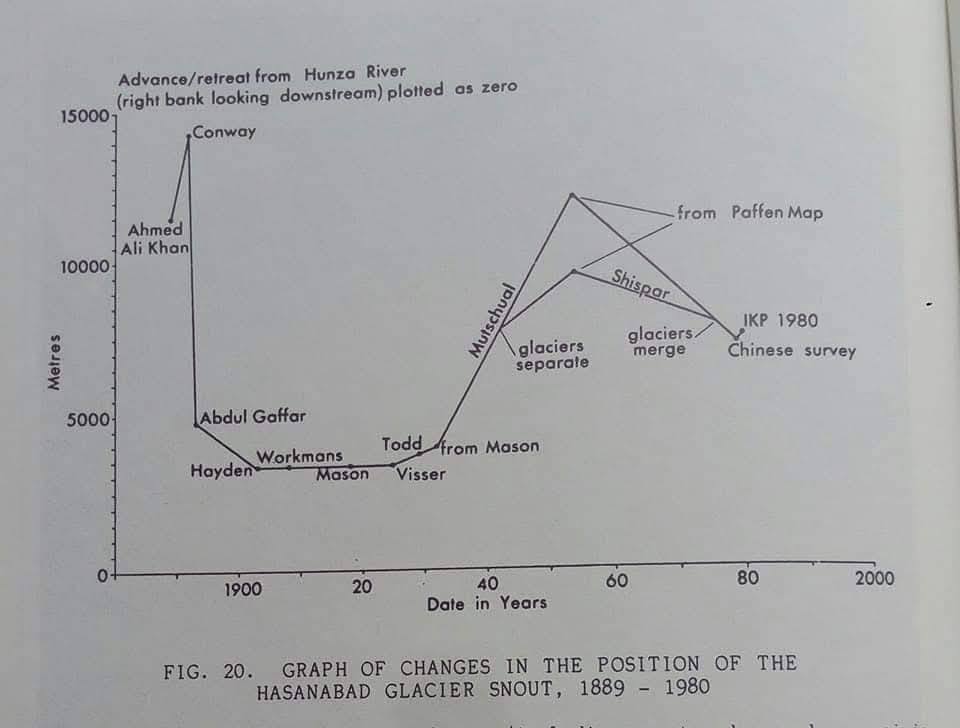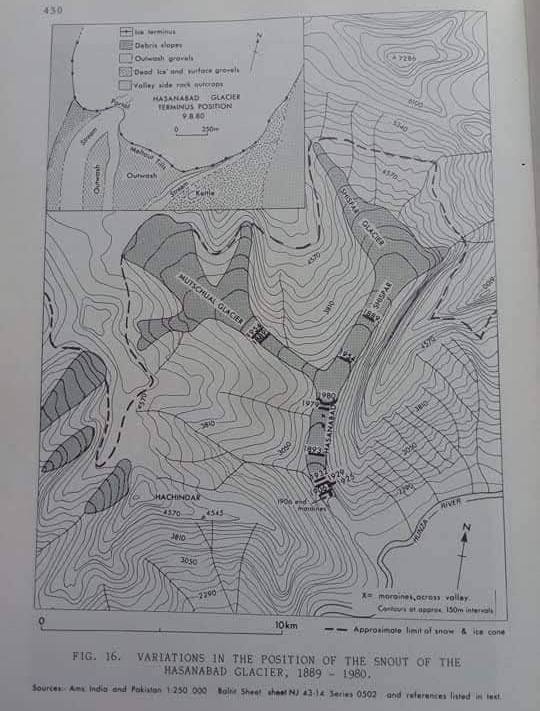“This great workshop of primaeval forces where nature seems to exert her supremest energy” George Nathaniel Curzon’s depiction of the Hunza landscape remains hauntingly accurate when observing the Shishper Glacier’s behavior.
The Hasanabad Glacier system, with its twin arms Muchuhur (western basin) and Shishper (eastern basin) descending dramatically from peaks exceeding 7,300 meters, epitomizes glacial volatility. Historical records reveal a landscape sculptor of unparalleled dynamism: between 1889 and 1980, its snout shifted positions over an astonishing horizontal distance of 11 kilometers, including a documented advance of 9.7 km in just 2.5 months around 1890. This cyclical pattern of rapid advances followed by decades long retreats has long puzzled glaciologists, establishing Shishper as one of Earth’s most temperamental glaciers.
Current Surge Phase: A Modern Episode of Instability
Since early 2018, Shishper Glacier has entered another aggressive surge phase, advancing over 1.5 km and blocking the outflow of neighboring Muchuhur Glacier. This obstruction creates a recurring ice-dammed lake that swells to approximately 0.34 km² before breaching catastrophically. Unlike the 22-year stability period observed from 1903–1925, recent surges exhibit alarming unpredictability: flow velocities have reached 48 meters per day during peak activity. The glacier’s current morphology shows the eastern tongue overriding the western branch, with meltwater carving unstable ice caves at the terminus mirroring descriptions from the 1979 Chinese surveys.
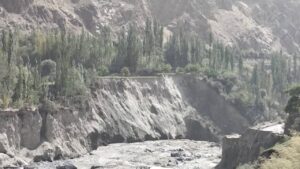
Documented Surge Events of Shishper Glacier
- 1890s: Shishper Glacier rapidly advanced, moving ~9.7 km in 75 days.
- 1903–1925: Glacier’s snout remained static with minimal movement.
- 1925–1955: Major retreat, glacier receded by ~7 km.
- Late 1970s: Glacier re-advanced, reuniting branches with significant forward movement.
- 2018–Present: Active surge phase, advancing >1.5 km with annual glacial lake outburst floods (GLOFs).
Why Such Unpredictability?
Shishper’s erratic behavior stems from a confluence of geophysical and climatic factors:
- Tectonic Triggers: Situated directly on the Karakoram fault line, tectonic shifts lubricate the glacier’s base, facilitating sudden slips .
- Climate Paradox: While global warming drives glacial retreat elsewhere, the Karakoram experiences increased winter snowfall due to changing atmospheric patterns. This adds mass to accumulation zones, while summer meltwater percolation reduces basal friction primes surges .
- Geometric Instability: The glacier’s steep upper reaches (>14.8% slope) feed ice onto flatter valleys. When critical mass thresholds are exceeded, kinematic waves propagate, triggering rapid advances .
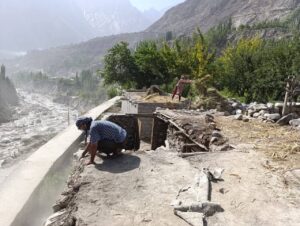
Mitigating Risks: Advanced Monitoring and Adaptive Strategies
- Next Generation Glacier Surveillance
Traditional field surveys remain hazardous here. Instead, an integrated remote sensing approach offers real time insights:
- DInSAR Processing: Detects millimeter scale surface deformations using satellite radar (e.g., TerraSAR-X) to forecast surge accelerations .
- Multi-Spectral Analysis: Combining NDSI (snow cover), NDWI (water bodies), and thermal bands from Landsat/Sentinel to map lake evolution and icedam stability.
- UAV Fleets: Deploying drones for cloud penetrating LiDAR and photogrammetry during monsoon obscured periods provides high resolution DEMs for flood modeling .
- Monitoring Technologies for Shishper Glacier
- Evacuation Drills: Villages like Passu conduct biannual simulations, training residents in highbangle rescue and first aid .
- Land-Use Zoning: Restricting construction in the GLOF pathway (identified through hydraulic modeling) reduces exposure.
- Slope Stabilization: Planting deep rooted vegetation (e.g., poplars) on moraines minimizes debris flow impacts .
- Engineering Interventions
- Controlled Drainage: Excavating spillways for ice-dammed lakes enables gradual water release, reducing peak flood discharges.
- Gabion Barriers: Strategic placement of rock-filled cages dissipates flood energy, protecting critical infrastructure like the Karakoram Highway
Future Trajectory: Navigating the “Karakoram Anomaly”
The so-called Karakoram Anomaly where glaciers stabilize or advance despite regional warming may delay Shishper’s retreat. However, DInSAR data confirms a slight negative mass balance (-0.06 m w.e yr⁻¹) since 2000. As temperatures rise, the frequency of icedam formations and GLOFs will likely increase. Proactive measures must include:
- AI-Powered Early Warning: Machine learning models assimilating weather forecasts, discharge data, and glacier velocity to predict breaches 24–72 hours in advance.
- Transboundary Data Sharing: Collaborating with Chinese and Tajik institutes for basin wide risk assessment.
- Relocation Planning: Identifying safe resettlement zones for villages like Hassanabad, where homes already teeter over eroded cliffs .
“As I approach the end of my life, I feel helpless. The children ask where we will live? We have no options.” Sultan Ali, a Hassanabad elder, encapsulates the human dimension of this geological drama .
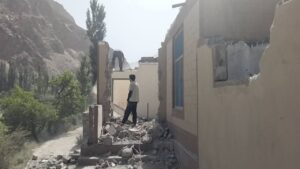
While Shishper’s primordial forces cannot be tamed, blending cutting edge surveillance, adaptive engineering, and community mobilization offers the best hope for coexistence. Only through respecting the glacier’s rhythms while innovating relentlessly can the communities of Hunza thrive in the shadow of this magnificent, mercurial giant.
Authored by Karim Shah Nizari, a climber and climate activist from Yasin, Hindu Raj mountains.

